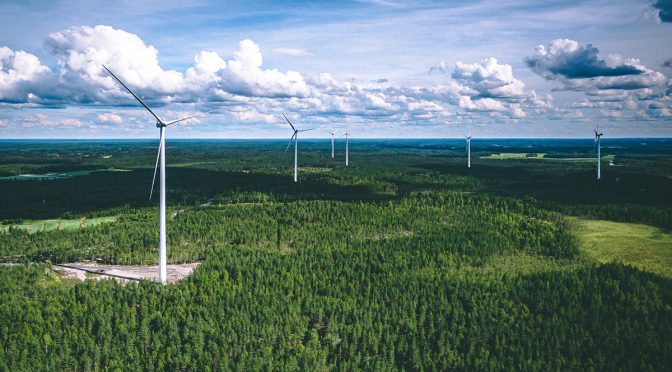The EU installed 15 gigawatts (GW) of new wind farms in 2022. That’s one third more than 2021. This increase in new installations is an encouraging result given the overlapping challenges the industry faced in 2022. And the 15 GW installed are an important contribution to strengthening Europe’s energy security ahead of next winter. But Europe must continue to simplify permitting and invest heavily in its wind energy supply chain to deliver its energy and climate targets.
The EU installed 15 GW of new wind farms in 2022. That’s a third more than 2021. In terms of new capacity installed Germany, Sweden and Finland are leading the way, followed by Spain and France.
90% of the new wind capacity was onshore wind. And nearly all the new onshore wind farms were in new greenfield sites. There was not much repowering of older wind farms. Governments are missing a trick here: on average repowering triples the output of wind farm with one quarter fewer turbines.
Increase in capacity factors means more renewable electricity per GW
Today’s new wind farms generate more electricity per MW than they used to. New onshore wind farms have average capacity factors of above 35%. New offshore wind farms deliver capacity factors of 50%. Modern onshore turbines produce on average 3 TWh of electricity a year for each GW installed; modern offshore turbines on average 4.4 TWh pa.
Progress on permitting
It’s good the EU built more wind farms in 2022 than 2021. But 15 GW still falls significantly short of what Europe needs to build to deliver on its climate and energy security targets. The shortfall is largely due to permitting bottlenecks. 80 GW of wind energy projects are currently stuck in permitting procedures across Europe. They must be unlocked as fast as possible. The REPowerEU measures on permitting will help. And some Governments are already taking steps nationally to improve things.
“15 GW new wind in 2022 is not too bad given the challenges faced last year by Europe’s wind industry. It’s not enough for the EU’s energy targets, but Governments know the latter can only be achieved if they simplify the permitting rules and procedures – and there are now signs of progress on this. Less encouraging is the slowdown in investments in new wind farms. Confusion about electricity market rules is turning investors away. The EU must make Europe an attractive place for renewables investments again”, says WindEurope CEO Giles Dickson.
New investments down
A combination of inflation and unhelpful Government interventions in electricity markets is undermining investments in new wind farms. In the first 11 months of 2022 the total new investments in wind farms in the EU covered only 12 GW of new capacity. This is significantly less than the rate of new investments needed to deliver the EU’s 2030 climate and energy targets. The EU’s forthcoming reform of electricity markets must give investors greater clarity about what rules apply. The freedom given to Member States in last year’s emergency measures to set their own national rules is turning investors away. They’re investing instead in the US, Australia and elsewhere. The EU is not attractive for major renewables investors right now.
What makes this especially frustrating is that demand for wind energy among industrial consumers in Europe has never been higher. They want more wind to help decarbonise their operations. The number of corporate renewable PPAs held up quite well in 2022 but would have been much higher if there were more investments in new wind farms coming.
Challenges for the wind energy supply chain
2022 was a difficult year for the wind energy supply chain. Inflation hit Europe’s turbine manufacturers and suppliers hard. They now face a range of overlapping challenges: inflation in key inputs and commodities, dysfunctional trade flows and bottlenecks in the sourcing of some materials and components plus poor auction design in some countries.
Europe must invest in its industrial base to deliver the clean and digital transitions. Not least to emulate the comprehensive policy support for green technologies offered in other parts of the world, such as the US Inflation Reduction Act. The EU, national Governments and the EIB all have a role to play in supporting investments in new and upgraded wind energy production facilities.
“Last year’s 33% increase in new installations shows that the European wind industry is stepping up to the challenge. But the current cost pressures leave our companies with little room for urgently needed new investments. If the EU is serious about its energy and climate targets, it should facilitate these investments in our supply chain: factories, skilled workers, grids, raw materials and vessels”, says Giles Dickson.


